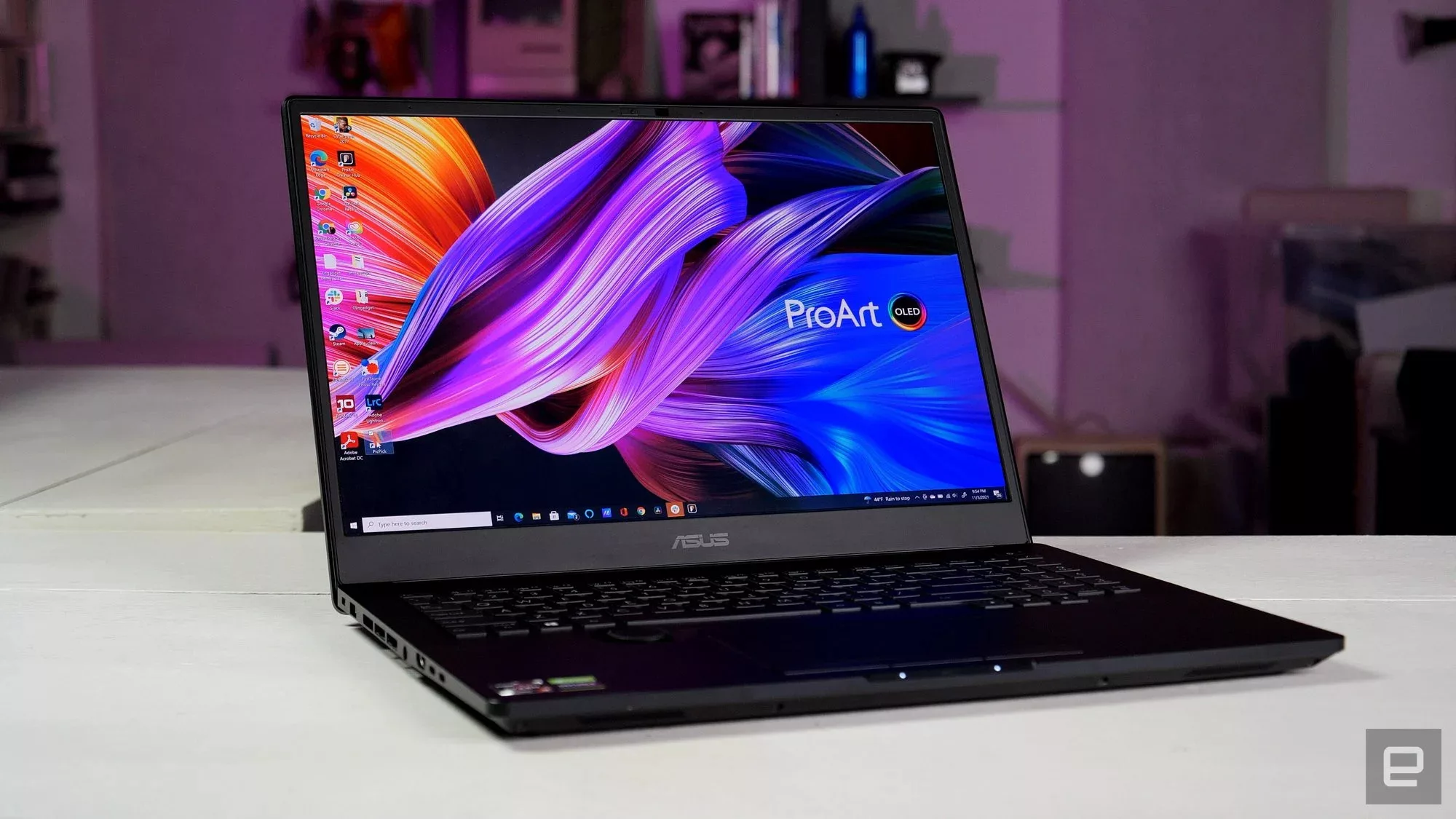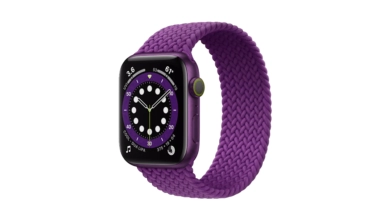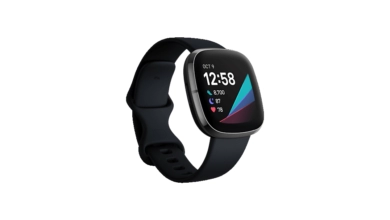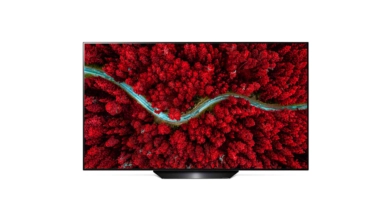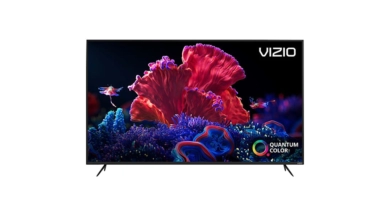ASUS ProArt StudioBook 16 OLED
The greatest laptop for Windows creators
A stroke of marketing brilliance by ASUS, the ProArt range of creator-oriented gadgets helped differentiate them from their competitors with a line of premium devices. High-performance laptops that are attractive to artists include the Studiobook 16 OLED H5600 and the “ASUS dial” for video or photo editing.
These laptops like the ASUS StudioBook One were workstation-type computers with pricey hardware like NVIDIA Quadro 6000 GPUs. In order to maximize value, ASUS has opted to include components like an RTX 3070 graphics card and an AMD Ryzen 9 eight-core processor in this model. There are Xeon processors and Quadro graphics in the more expensive StudioBook 16 Pro variants, which are also available.
When it comes to performance, can a low-cost laptop like this compete with more expensive versions or even high-end gaming laptops? My first test was with an OLED-equipped Studiobook 16 OLED model, which had a good set of features but was still affordable enough for my needs.
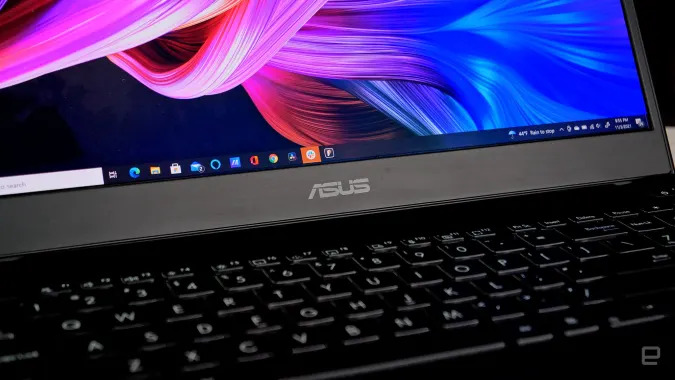
All Studiobook devices have a businesslike appearance that is distinct from ASUS’s gaming-oriented designs. To that purpose, the only distinguishing design feature is the discreet ProArt logo on top of the basic black, square-edged body. It’s not the lightest or smallest 16-inch laptop on the market, but it does have pretty low bezels. Even yet, the 5.28-pound weight and.77-inch thickness make it a manageable size, especially given that ASUS claims it provides “military-grade ruggedness” (MIL-STD 810H).
This thermal solution, called IceCool Pro, is designed to increase airflow by 16 percent while keeping noise levels at 40 dbA in regular cooling mode. Dual 102-blade fans, six heat pipes, and several ducts are used to accomplish this.
Switching to “full-speed” mode increases the output to 135 watts, or 95 watts in “performance” mode. If you’re not doing GPU/CPU-intensive tasks, fan noise is still tolerable in performance mode, but at full speed, it can be quite annoying. However, if you’re planning to leave the room while rendering, it could be a useful mode. Heat and noise levels are kept to a minimum.
ASUS says this is the first 16-inch laptop to include an OLED display with a resolution of 3,480 x 2,400 (16:10). If you’ve ever wanted to see a laptop display that’s as sharp, colorful, and stunning in person as possible, this is it.
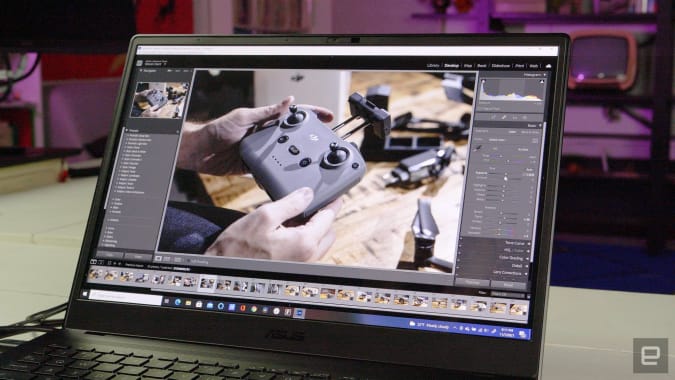
A delta E of less than two, as validated by my X-Rite i1 Display Pro calibrator, indicates that the panel has been factory-calibrated to Pantone and Calman color accuracy standards. In spite of the changes in display technology, the colors on this $4,000 ASUS mini-LED ProArt monitor matched my eyes quite accurately.
In workstation laptop area, the real 10-bit panel provides 100 percent DCI-P3 color coverage, much above rivals such as the MacBook Pro and Dell’s XPS 15 (78 percent) (85 percent). Because of the high level of color accuracy, programs like DaVinci Resolve and Adobe Lightroom Classic can apply fine-grained color correction with ease. With a 1,000,000:1 contrast ratio and deep, rich blacks from the OLED display, it’s the best entertainment laptop I’ve ever used as well.
ASUS might have made it easier to switch the display’s color profile for video editing (Rec.709, DCI-P3, and so on) or photo editing (Rec.709, DCI-P3, and so on) given that the display is capable of color correction (AdobeRGB, sRGB). As an.icm profile for Windows Color Management or in the Creator Hub, this could be useful.
To meet VESA’s DisplayHDR True Black 500 standard for OLED screens, this laptop’s display may be set to 550 nits of brightness in HDR mode. A mini-LED display on Apple’s most recent MacBook Pros has 1,600 nits of maximum brightness. Whether OLED or mini-LED is better for a creator laptop is debatable, but I personally prefer the deeper blacks of OLED to the eye-scorching brightness and haloing of mini-LED.

The ProArt Dial is also a standout feature. In my opinion, it’s understandable that you think it’s a gimmick. It’s not uncommon for cool-looking control surfaces like these to wind up in drawers where they never see action.
However, there are certain advantages to this one. The textured grip, smooth rotation, and clicky detents make it a pleasure to use. Because it’s right underneath the keyboard, it’s a simple matter of convenience. Because it’s easier to hold than a control surface like Microsoft’s Surface Dial or an external control surface, it makes more sense.
It is easier to utilize the volume or brightness controls on a computer with no programs installed than to use the function keys. For the best results, you need Adobe’s Creative Cloud software. A dedicated pie chart-like menu with “slices” for brush choices, layer zoom, and so on appears when the dial is pressed while Photoshop is open On the brush menu, for example, pressing it again brings up options for hardness, flow, opacity, etc. In terms of custom menus, both Premiere Pro and After Effects have a similar set up.
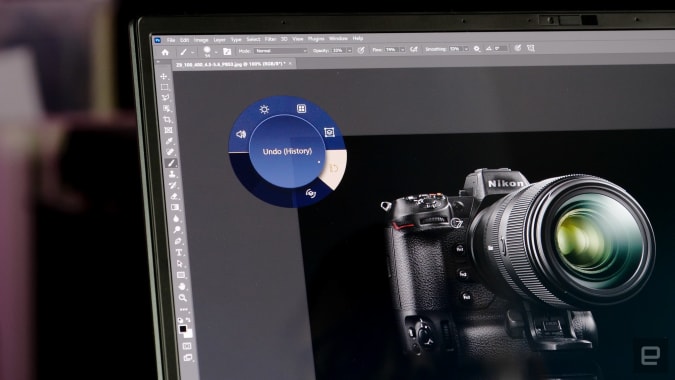
You can access the ASUS ProArt Creator Hub program if the stock menus don’t suffice. Drop-down menus allow you to customize the functionality to your liking. Photoshop, Premiere Pro, After Effects, and Lightroom Classic are the only apps supported by the dial as of this writing. ASUS needs to integrate additional apps, especially DaVinci Resolve, to their software.
While working as a video editor, I used control surfaces, but I’ve never been a great admirer of them on PCs. It wasn’t until I utilized the ASUS dial with Photoshop and Premiere Pro that I realized how much I loved it! With one hand typing while the other was jogging video and switching tools, it was natural to keep both hands busy. It became second nature to me and sped up my day-to-day tasks.
The trackpad on the laptop’s front is slick and fast, and it has three buttons instead of just two, which brings me right back to the early 2000s when all PC mice had three buttons. An additional control for 3D or CAD apps or video editing could be beneficial with the third one. A stylus can be used with the MPP 1.51 standard, including ASUS’ own, on this ASUS laptop touchpad. Artists may now utilize the touchpad as a precise drawing tablet because of this feature. It’s wonderful to have this feature available, even if I can’t actually use it myself.
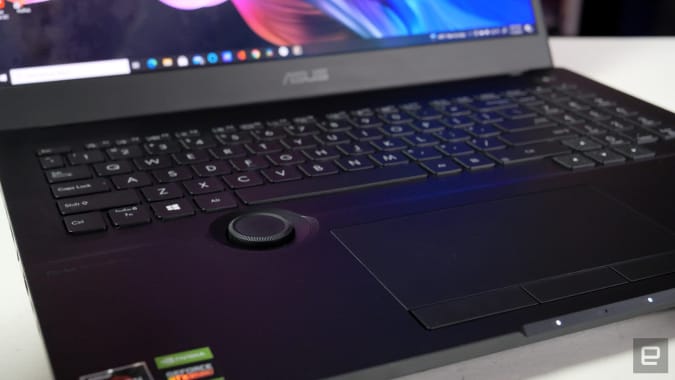
With a separate number pad, the keyboard is convenient to have, and it has a good amount of travel. However, the ASUS dial essentially increases the distance between the touchpad and the keyboard, so the keys are a tad smaller than usual. It was never a problem for me because I got used to it so easily.
In terms of connectivity, it has two 10Gbps USB-C 3.2 gen2 ports, two 10Gbps USB-A 3.2 gen2 ports, HDMI 2.1, an audio jack, and RJ45 Ethernet. If you’re looking to stream 4K content at 120 frames per second, you can use the HDMI 2.1 port to connect a compatible TV to your computer. Since many monitors only support DisplayPort, it’s a plus that one of the USB-C connections has that capability. However, I would have liked to see an additional USB-A port or two, given the fact that many designers frequently connect a large number of devices.
A cutting-edge SD Express card slot from ASUS can read data from supported cards at an amazing 985 MB/s, which is great. But there’s a significant problem. SD UHS II cards, which are used by many cameras, can only be read at 100 MB/s by the StudioBook, instead of 300 MB/s. I would have preferred a normal UHS-II slot instead of SD Express because no cameras currently support it. However, Sony, Nikon and Canon are members of the SD Express consortium and hope this will change.
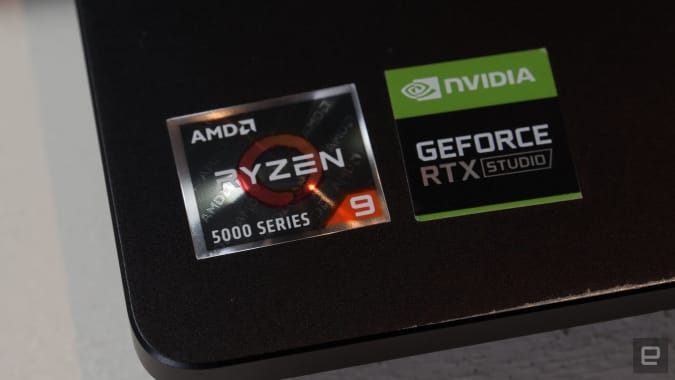
ASUS put an audiophile-grade ESS Sabre DAC, which promises lower distortion and a wider dynamic range, into the device. A pair of speakers instead of four or more like some modern laptops is all that’s available. For a laptop like this, they’re above average, offering good mid-range sound and tolerable low end. IR HD webcam with Windows Hello and privacy shutter are also included, as is a fingerprint reader on the power button.
Let’s get into the nitty gritty of performance. ProArt StudioBook OLED 16 employs the RTX 3070 mobile GPU, rather than the top-end RTX 3080, for testing. That’s fine with me, as an RTX 3080 wouldn’t make much of a difference in creative apps and would also raise the price and generate heat. Except for that, everything is top-notch. One of the most powerful Ryzen 5900HX chips, 32GB of RAM and two terabytes of storage in Raid 0 make this laptop a powerhouse. ASUS is expected to begin offering Windows 11 upgrades early next year for this model.
ProArt StudioBook passed our standard battery of tests, including PC Mark 10, 3D Mark’s Time Spy, Atto’s diskbench and others.
| None | PCMark 10 | 3DMark (TimeSpy Extreme) | Geekbench 5 | ATTO (top reads/writes) |
| ASUS ProArt StudioBook 16 OLED H5600 (Ryzen 5900HX, NVIDIA RTX 3070) | 6,954 | 4,604 | 1,499/9,053 | 5.61 GB/s / 5.35 GB/s |
| ASUS Zephyrus G15 (AMD Ryzen 9 5900HS, NVIDIA RTX 3080 Max-Q) | 6,881 | 4,530 | 1,426/7,267 | 3.3 GB/s / 2.85 GB/s |
| MSI GS66 Stealth (2021, Intel i7-10870H, NVIDIA RTX 3080 Max-Q) | 5,369 | 4,538 | 1,247/6,505 | 3.1 GB/s / 2.9 GB/s |
| Gigabyte Aero 17 HDR XB (Intel i7-10875H, NVIDIA RTX 2070 Super Max-Q) | 5,155 | 3,495 | 1,137/5,681 | 2.93 GB/s / 2.59 GB/s |
| ASUS Zephyrus Duo 15 (Intel i9-10980HK, NVIDIA RTX 2080 Super Max-Q) | 5,616 | 3,680 | 1,365/8,055 | 3 GB/s / 3.24 GB/s |
As can be seen from the graph, it was towards the front of the pack in all of them, especially when it came to disk speeds. The RAID 0 NVMe storage provides disk speeds of 5.6 GB/s for reads and 5.35 GB/s for writes. In the case of disk-intensive applications like Premiere Pro, the benefits cannot be emphasized.
For content creation, I tested Maxon’s Cinebench R23 and Puget Systems’ PugetBench for Adobe Photoshop, Adobe Premiere Pro and Davinci Resolve, as well.’ Real-world results can be obtained through the PugetBench tests, which automatically loop through a variety of functions that test effects, encoding, playback, and so on. When compared to other contemporary gaming and creative computers, the results were outstanding.
For example, it scored 938 on the PugetBench DaVinci Resolve extended overall test, which is comparable to many desktop computers. PugetBench Photoshop 22 CC returned a score of 981, whereas the Dell XPS 15 OLED achieved a score of 781 and the Lenovo ThinkPad P15 Gen 2 achieved a score of 998. Compared to Apple’s M1 Max MacBook Pro, which scored 821 on the PugetBench Premiere Pro Standard test, this laptop scored 698.
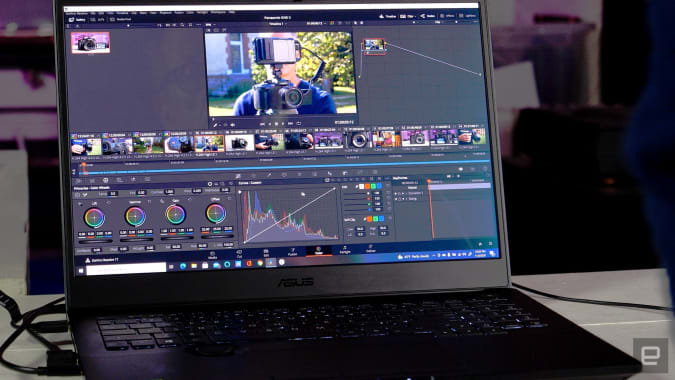
If you’re a gamer, you’ll be pleased with the performance of this laptop, which I used to play Cyberpunk 2077, Destiny 2 and other titles with ease. Though I had to down the detail settings quite a bit for 4K laptop gaming, the frame rates were acceptable. The 60Hz refresh rate of the 4K panel is, of course, a limiting factor.
Even if gaming and synthetic benchmarks are fine, creative laptops need to establish themselves in the workplace as well. To that goal, I used DaVinci Resolve 17.2 to edit a laptop camera review video and Premiere Pro CC to create this video. After Effects and Lightroom were also used.
The ProArt Studiobook once again performed admirably, delivering smooth 4K editing even with the most demanding GPU-intensive camera codecs on the market. In Resolve (NVIDIA encoder, MP4, 4K, 12,000 Kbps max data rate), I was able to export 4K footage at approximately 300 percent real-time speed with color correction, text, and other light effects on nearly every shot.
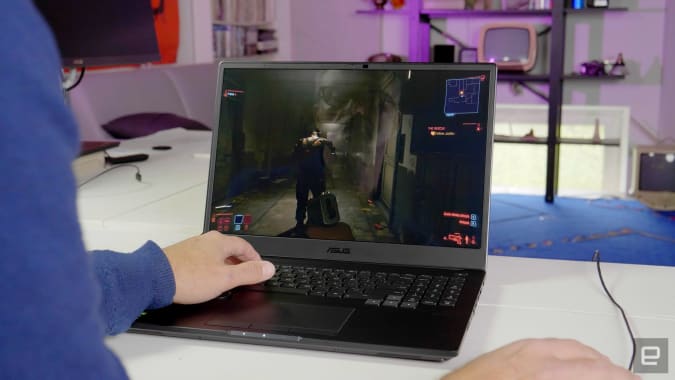
The battery life of the StudioBook is impressive for a laptop that is commonly used as a desktop replacement. Even with a 4K display, it lasted a full 6 hours and 20 minutes in our 1080p video loop rundown test and even longer for everyday surfing and work. Here, AMD’s efficient Ryzen 9 CPU may play a big role.
Only Dell’s XPS 15 OLED model can last more than 9 hours between charges, and that’s only the XPS 15 OLED. However, the $2,500 16-inch MacBook Pro M1 Max lasted a whopping 16 hours and 34 minutes in our tests. A little lower screen resolution, but a 2.5 times longer lifespan.
With the fan only starting in while exporting or creating complicated sceneries, the StudioBook 16 OLED was very silent during these tasks. Although it was quieter than my Gigabyte Aero 15X laptop, it was still significantly quieter than any other laptop I’ve owned. It’s possible to select the “full-speed” setting if you want maximal rendering performance without having to stay in the room.
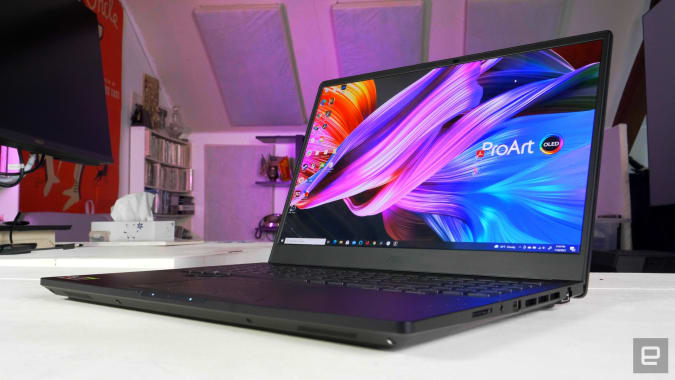
Finally, is the ASUS ProArt Studiobook 16 OLED laptop worth the money over other creative versions or a similarly equipped gaming machine? That’s for sure.
It’s not only speedy; it’s smooth and dependable in creative tasks, and “reliable” is critical for laptops geared toward output. Without overheating or making a lot of noise, it performs 4K editing and huge images. Not a bad gaming machine, although the 60Hz 4K screen doesn’t really help with that.
You get a lot for your money with the OLED model. Though the final price hasn’t been determined, the model I’m working with will cost roughly $3,000, though ASUS hasn’t yet. Unless you’re ready to fork over a lot of money, this laptop has a better set of features than any other creative laptop on the market. And don’t forget about the StudioBook’s unique features, such as the 16-inch 4K OLED display and ProArt dial, which aren’t found on any other laptop.
The M1 Pro and M1 Max processors in the new MacBook Pro models are making things more exciting for creative laptop customers. They’re more competitive than Intel MacBook Pros since they’re faster, quieter, and offer longer battery life. It has been found in testing by Engadget that the new MacBooks are better in certain respects (battery life and video playback) than PC laptops like the Studiobook 16, but they are poorer in others (rendering, GPU performance in general). Next time, we’ll talk about it further in depth.
ASUS ProArt Studiobook 16 OLED is a great Windows 10 content creation laptop at a reasonable price point. As far as new computers go, this one is the best I’ve seen in a long time.
ProArt StudioBook 16 OLED
Performance - 9.5
Display - 10
Cost - 10
9.8
9.8/10 Total Points
It offers everything a creator will ever need, all within a small-compact case.

